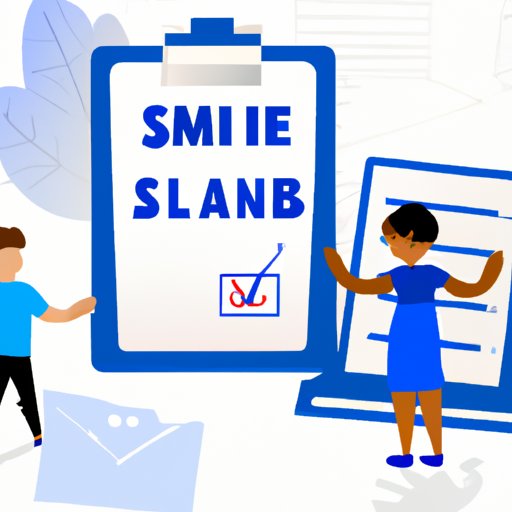
I. Introduction
Small business loans play a significant role in providing entrepreneurs with the funds needed to start or expand their businesses. However, obtaining a loan can be a daunting task, especially for those who are new to the process. In this article, we will provide a comprehensive guide to obtaining a small business loan.
II. Beginner’s Guide to Getting a Small Business Loan
A small business loan is a type of financing that is specifically designed to help business owners cover the costs of starting or expanding their operations. There are several types of small business loans available, including term loans, lines of credit, and equipment financing. Eligibility criteria for small business loans vary, but typically, businesses must meet minimum revenue requirements and have been in operation for a certain amount of time. Applying for a loan involves submitting an application, providing financial statements, and undergoing a credit check. The process can take anywhere from several days to several weeks.
III. How to Increase Your Chances of Being Approved for a Small Business Loan
To increase your chances of being approved for a small business loan, it is important to have a good credit score and a low debt-to-income ratio. This can be achieved by paying bills on time, reducing debts, and ensuring that your financial statements are accurate and up to date. Providing collateral, such as property or equipment, can also help improve your chances of getting approved for a loan.
IV. Top Small Business Loans for Startups
Startups may have difficulty obtaining traditional small business loans due to their lack of credit history and revenue. Alternative options such as SBA microloans, Kickstarter campaigns, and specialized crowdfunding options can provide startup businesses with the funds they need to get started. Each option has its own advantages and disadvantages, and it is important to carefully consider your options before choosing the right loan for your business needs.
V. How to Create an Effective Business Plan to Get a Small Business Loan
A business plan is an essential part of the loan application process, as it provides lenders with an overview of your business, including your goals, objectives, and strategies. To create an effective business plan, you should include detailed financial projections, industry analysis, and marketing plans. The plan should be well-written and professionally presented. Avoid common mistakes such as overestimating revenue or underestimating expenses.
VI. Small Business Loan Alternatives You Should Consider
In addition to traditional loans, there are alternative funding sources available for small businesses such as small business grants, angel investors, and venture capitalists. Each option has its own advantages and disadvantages, and it is important to carefully consider your options before choosing the right funding source for your business needs.
VII. Interview with a Small Business Loan Expert
To provide an insider’s perspective on the lending process, we spoke to an experienced lender who shared tips on what entrepreneurs should know about getting a loan, common mistakes to avoid, and success stories to learn from.
VIII. Conclusion
Getting a small business loan can be a challenging process, but with the right preparation, research, and planning, it can be a valuable tool to help entrepreneurs grow and expand their businesses. Remember to choose the loan that suits your needs, create a solid business plan, and work on improving your financial standing before you apply. Utilize alternative funding options if appropriate, and don’t hesitate to consult with a lending expert if you need additional guidance.





